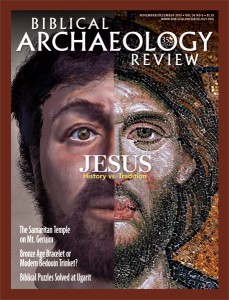Strata: On the Trail of Hazor’s Royal Archive

A cuneiform archive had never been found in Israel. But archaeologist Yigael Yadin was confident it was there—at Hazor where he was digging.a Remembered in the Bible as “the head of all those kingdoms” (Joshua 11:10), Hazor was the grandest of all the Canaanite city-states in the Bronze Age.
Major cuneiform archives had been found at Mari on the Euphrates and at El-Amarna in Egypt. Hazor is mentioned in these archives. Yadin thought there might even be two cuneiform archives at Hazor—one from the Middle Bronze Age (c. 2000–1550 B.C.E.) (like Mari) and another from the Late Bronze Age (1550–1200 B.C.E.) (like El-Amarna).
Sixty years later, archaeologists are still looking. Amnon Ben-Tor, Yadin’s successor at Hazor and the Yigael Yadin Professor at the Hebrew University, is not so confident as his illustrious predecessor. “Yes, we have expectations,” he told BAR. “But there are no certainties, just hope. There are no certainties in archaeology.”
Last summer his hopes were raised. A tiny, roughly 1-inch-square fragment from a cuneiform tablet was discovered on the surface of the mound. This is the third cuneiform fragment to have been randomly spotted on the surface—clear evidence that there must be at least one—or possibly two—archives awaiting discovery at Hazor.
Hebrew University Assyriologist Wayne Horowitz dates the new fragment to the 18th–17th centuries B.C.E.
Already a library member? Log in here.
Institution user? Log in with your IP address.

